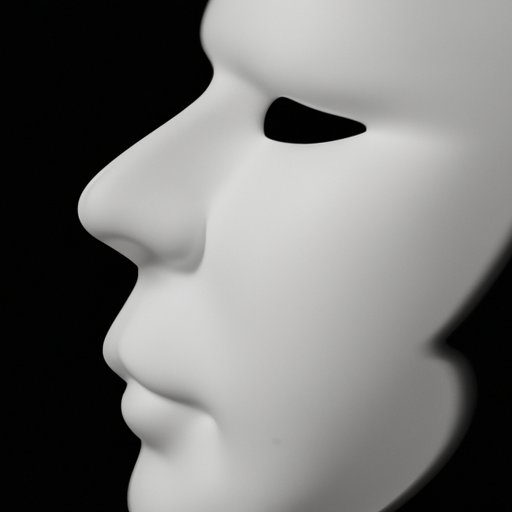
Introduction
Dissociative Identity Disorder (DID), formerly known as Multiple Personality Disorder, is a mental disorder that affects an individual’s sense of identity and memory. This disorder is often misunderstood and stigmatized, making it difficult for those affected by DID to seek help and support. The purpose of this article is to provide a comprehensive overview of DID and to offer tips and resources for those living with the disorder. This article is intended for anyone interested in learning more about DID, including individuals with the disorder, their loved ones, and mental health professionals.
Breaking the Stigma: Understanding the Truth about DID and Mental Illness
DID is often stigmatized and misunderstood, leading people to form misconceptions about the disorder. One of the most common misconceptions about DID is that it is not a real disorder, but rather a fabrication or attention-seeking ploy. However, DID is a mental disorder recognized by the Diagnostic and Statistical Manual of Mental Disorders (DSM-5) and is a result of severe trauma experienced during childhood.
Another misconception is that people with DID are violent or dangerous. However, this could not be further from the truth. Individuals with DID are no more likely to be violent than anyone else. In fact, people with DID are more likely to be victims of violence than they are to be violent themselves.
It is important to break down these stigmas and create a safe and supportive space for individuals with DID to seek help. There are a variety of resources available to those living with DID, including support groups such as The International Society for the Study of Trauma and Dissociation and hotlines like the National Alliance on Mental Illness (NAMI) Helpline. These resources can provide a supportive community, education, and practical tools for navigating life with DID.
Navigating Your Life with DID: Tips and Tools for a Thriving Life
Living with DID can be challenging, but there are practical tools that individuals can use to help manage symptoms and improve their quality of life. Self-care practices, such as mindfulness meditation and journaling, can help individuals manage anxiety and regulate emotions. It is also important for individuals with DID to prioritize self-care by setting aside time for relaxation and activities they enjoy.
In addition, it is important for individuals with DID to develop healthy and supportive relationships. This can include finding a therapist who is familiar with dissociation and has experience treating DID. It can also mean finding friends and loved ones who are supportive and accepting of the diagnosis. These relationships can provide a sense of community and help individuals feel less isolated.
Finally, managing day-to-day tasks can be challenging for individuals with DID. Strategies such as making a daily to-do list, setting reminders on a phone, and breaking large tasks into smaller steps can help make tasks less overwhelming. It can also be helpful to create a routine and stick to it as much as possible, as this can provide a sense of stability and predictability.
The Science Behind DID: Exploring the Latest Research
Research on DID is still in its early stages, but there are a variety of studies currently being conducted that may shed light on the disorder. One study found that individuals with DID have distinct neural patterns that differ from those without the disorder. This could potentially lead to a more thorough understanding of the disorder and a way to diagnose it earlier.
There are also a variety of treatments and therapies being explored, including talk therapy, cognitive-behavioral therapy (CBT), and medication. While there is no cure for DID, treatment can help manage symptoms and improve quality of life. It is important for individuals with DID to work with a mental health professional to find the best treatment plan for them.
Voices in Your Head: A First-Person Account of Living with DID
Living with DID can be a challenging and isolating experience. One individual with DID shares their personal experience navigating life with the disorder. They discuss the day-to-day challenges of managing symptoms, as well as strategies they use to cope. This personal perspective can provide insight and empathy for those living with DID.
When Trauma Takes Over: Understanding the Link Between Trauma and DID
DID is believed to be a result of severe trauma experienced during childhood, such as physical or sexual abuse. Trauma can cause individuals to dissociate as a way of coping with overwhelming emotions. Over time, this dissociation can become a coping mechanism, leading to the development of distinct identities.
It is important for individuals who have experienced trauma to seek help and begin the healing process. This can include therapy, support groups, and self-care practices. Healing from trauma can be a long and difficult journey, but it is possible.
Conclusion
Dissociative Identity Disorder is a complex and often stigmatized disorder. However, with education and support, individuals with DID can thrive and lead fulfilling lives. It is important to break down misconceptions about DID and create a supportive community for those affected by the disorder. By prioritizing self-care, developing supportive relationships, and seeking treatment, individuals with DID can manage symptoms and lead fulfilling lives.
If you or someone you know is struggling with DID, there are a variety of resources available, including support groups, hotlines, and mental health professionals. Remember, you are not alone and there is hope for healing.




